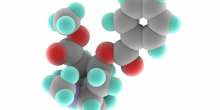
April 28 2020

At face value, it would appear to be a straightforward matter as to whether or not a drug is present upon analysis of a material or object. This, however, is not always so, and especially when we are dealing with drug traces only. Such cases need careful planning, execution and, crucially, interpretation of the findings. Without the correct and diligent approach, the presentation of a bland result of the presence of drugs traces can be meaningless, if not evidentially misleading.
The presence of drugs on money is a good example of this and one with which the reader may be familiar. A significant amount of research has been undertaken for this particular type of drug trace evidence and a degree of meaningful inference is now expected in reports for such cases. Many other drug trace scenarios are feasible which are less well explored. Indeed, some are unique events for which no prior experimentation could be foreseen or undertaken.
In this article, we will explore the main features of generic drugs trace cases and highlight some key points which need to be considered at each stage in the process from seizure to interpretation. Armed with this information, as and when you encounter such matters, you can assess if the case appears to have been well approached and explored, or if you feel it would benefit from deeper analysis.
Recovery and seizure
Thought should be given to the provenance of objects being considered for drug trace analysis. This should include co-location with other materials and association with other alleged activities. The manner by which objects have been seized/recovered and by whom also requires assessment. Could these factors have influenced or introduced drug traces? Were recovery and seizure procedures appropriate to prevent contamination?
Examination and analysis
Individuals and laboratories involved in the examination or analysis of drugs are exposed to various drugs in significant amounts. Contamination of these individuals, their garments and working area is inevitable. It is important to establish what countermeasures and special procedures have been put in place for dealing with exhibits for drug trace analysis, and that such practices are suitable and have been successfully applied. As ever, assessment should be made as to whether or not the analysis performed is adequately robust for its intended purpose.
Reported information
It may not be abundantly apparent that a Prosecution report is referring to drug traces. Other terms may be used such a ‘low level’ or ‘less than 1%’ of a drug has been detected. These vague wordings should prompt your concern that drug traces only may have been detected. In our experience, it is highly unlikely that the Prosecution expert will have provided a detailed interpretation of the findings, but nonetheless it would be prudent to have such an explanation, as there are many facets to be aware of.
Interpretation of findings
There will always be issues specific to any case which need particular consideration, but in any drugs trace matter, there are almost always generic issues which need to be assimilated into any detailed assessment. Such issues tend to qualify the bland analytical findings and highlight what can be somewhat tenuous or over-zealous assumptions.
KBC can help
We have a wealth of expertise in drug trace cases, from personal hands-on laboratory experience through to interpretation of analytical findings. Cases involving drug traces always require some degree of explanation and interpretation to avoid misunderstandings and to provide meaningful evidence. If you have any questions about a drugs case which may involve trace evidence, please contact us for further advice.